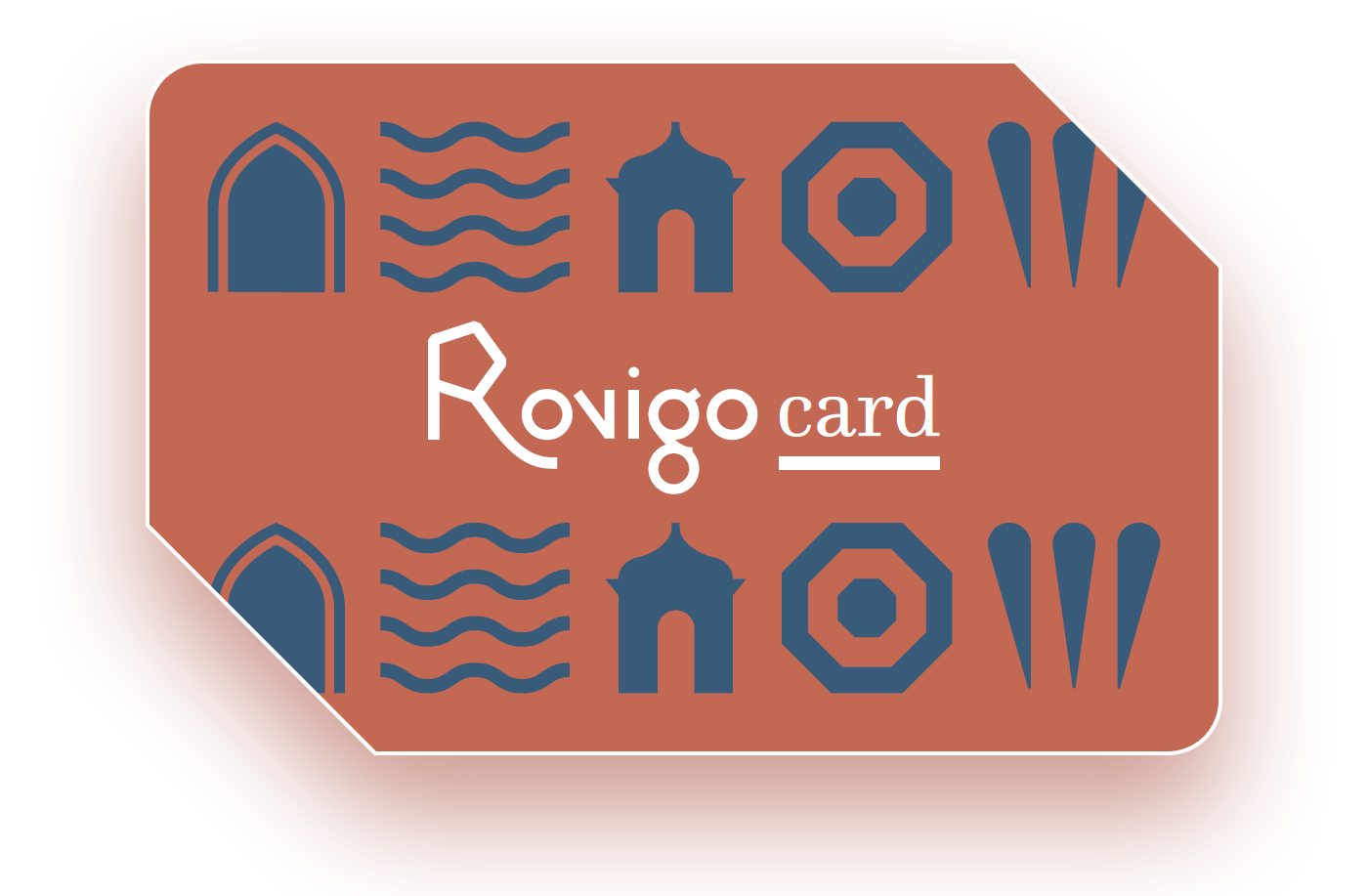The religious sites
The religious sites in Rovigo
Italy is a treasure trove of places of worship rich in art and history. Among the cities, Rovigo has churches and cathedrals of inestimable value.
Discover the holy sites of the town.
Tempio della Beata Vergine del Soccorso known as "La Rotonda" (Temple of the Blessed Virgin of Succour)
Piazza XX Settembre, 37
The monument is a symbol of the town. Officially named after the Visitation of Mary, it is known as "La Rotonda" owing to its octagonal shape. Designed by Francesco Zamberlan from Bassano del Grappa, architect for the magistrate of Acque di Venezia who collaborated with Andrea Palladio, its construction began on October 13th 1594, in the presence of Bishop Lorenzo Laureti and the city authorities. The interior is characterised by majestic Baroque decorations, made up of spectacular teleri (canvases) by the most relevant painters form Veneto of the 17 th century, including Francesco Maffei and Antonio Zanchi. The whole building is enriched by sculptures and decorative elements such as the golden wooden altar by Giovanni Caracchio (1607), the organ by Gaetano Callido (1767) and the frescoed ceiling by Vittorio Bressanin (1887). The 57-metre-high bell tower is by Baldassarre Longhena (1773).
ADDRESS
Piazza XX Settembre, 37, 45100 Rovigo RO
CONTACTS
Phone no: +39 389 1745766
E-mail: info@tempiolarotonda.it
www.tempiolarotonda.it
OPENING TIMES
- Monday: closed
- Tuesday-Wednesday: 2:30 PM-6:00 PM
- Friday, Saturday and Sunday: 10:00 AM-12:30 PM and 2:30 PM-6:00 PM
Visitors are not allowed in during church services and concerts.
Sunday religious services are temporarily suspended.
ADDRESS
Piazza XX Settembre, 37, 45100 Rovigo RO
CONTACTS
Phone no: +39 389 1745766
E-mail: info@tempiolarotonda.it
www.tempiolarotonda.it
OPENING TIMES
- Monday: closed
- Tuesday-Wednesday: 2:30 PM-6:00 PM
- Friday, Saturday and Sunday: 10:00 AM-12:30 PM and 2:30 PM-6:00 PM
Visitors are not allowed in during church services and concerts.
Sunday religious services are temporarily suspended.
Oratorio della Santissima Concezione o Chiesetta del Cristo (Oratory of the Holy Conception or Christ Church)
Via IV Novembre
In the first half of the 13th century the first Franciscan chapel was built, now stands the Oratorio della Santissima Concezione, better known in the city as Chiesetta del Cristo. This sober and elegant 15th-century religious building is characterised by its three naves inside, divided by Doric columns and surmounted by a wooden beamed ceiling, and by a facade which was completely rebuilt in 1888, a project by Raffaele Cattaneo, an architect from Rovigo. Particularly interesting are the precious 18th century altar and a fragment of a fresco depicting the Virgin and Child.
Duomo Concattedrale di Santo Stefano Papa e Martire (Co-cathedral Cathedral of St Stephen Pope and Martyr)
Piazzale Duomo, 5
The story of the Saint Stefano's Church is characterised by upgrades, extensions and rebuilding over the centuries, until 1696, when the foundation stone of the current Cathedral was laid on the site where Saint Stephen's Church (1050) stood. The current building, designed by the architect and humanist Girolamo Frigimelica from Padua, has an 18th century structure and contains works of artistic interest by Jacopo Palma il Giovane and Andrea Vicentino.
Phone no: 0425 22861
E-mail: parrocchia@duomorovigo.it
Phone no: 0425 22861
E-mail: parrocchia@duomorovigo.it
Chiesa San Bartolomeo Apostolo (Church of St. Bartholomew Apostle)
Piazzale S. Bartolomeo, 17
A 16th century building, the work of masters from Ferrara, it was built next to the Olivetans’ monastery, whose cloister and part of the rooms inhabited by the monks have been preserved. Inside, you can admire some paintings of considerable artistic interest and an organ by Gaetano Callido.
Phone no: 0425 421569
E-mail: sanbortolorovigo@gmail.com
Phone no: 0425 421569
E-mail: sanbortolorovigo@gmail.com
Chiesa di Sant'Antonio Abate known as San Domenico (Church of Sant'Antonio Abate)
Via X Luglio, 19
The origin of this church dates back to the early 16th century and is bound to the foundation of the Hospital of Saint Antonio Abate by Giovanni, Marco and Marsilio Casalini. From this early period are the altars to Saints Antonio, Lucia, Sebastiano and Rocco. In 1542 the entire structure was given to the Dominicans, who turned it into a convent; later on, during the first half of the 17th century the chapel, an altar dedicated to Saint Liberale and a chapel dedicated to Saint Antonio Abate were created in front of the one dedicated to the Casalini family.
Abandoned in 1770, the convnet and church were seized by the State; the convent was turned into barracks until 1857 and then demolished to make way for the covered market, while the church was reopened for worship.
The peculiarity of this church is that it doesn't have a facade like other churches, since it is surrounded by other buildings and is accessible from the side, which, in fact, represents its facade.
Abandoned in 1770, the convnet and church were seized by the State; the convent was turned into barracks until 1857 and then demolished to make way for the covered market, while the church was reopened for worship.
The peculiarity of this church is that it doesn't have a facade like other churches, since it is surrounded by other buildings and is accessible from the side, which, in fact, represents its facade.
Chiesa dei Santi Francesco e Giustina (Church of Sts Francis and Giustina)
Piazzale San Francesco, 6
According to history, Saint Francis travelled through Polesine and Rovigo in 1213, which would have originated the many Franciscan settlements, one of the oldest in Lendinara. In 1292 Obizzo II of Este ordered in his will the construction of a Franciscan convent, that would be placed not far from the Santa Giustina's Church, which no longer exists. During this first phase the church, built according to the Franciscan standards, was meant to have one single nave with a wooden beamed ceiling and a T-shaped plant.
Major changes were made during the 15th century, with the addition of a nave on the right side and five noble chapels, but the most radical work began in 1826 and ended with the creation of the current neoclassic-style facade designed by Lorenzo Rossini, completed in 1892. All that remains of the old convent today is part of the first cloister with the 14th century staircase.
Major changes were made during the 15th century, with the addition of a nave on the right side and five noble chapels, but the most radical work began in 1826 and ended with the creation of the current neoclassic-style facade designed by Lorenzo Rossini, completed in 1892. All that remains of the old convent today is part of the first cloister with the 14th century staircase.
Oratorio della Beata Vergine di Pompei (Oratory of the Blessed Virgin of Pompei)
Via Gorizia
The Oratorio della Beata Vergine di Pompei, commonly known as Chiesetta delle Fosse is a small but precious religious building dedicated to The Virgin of the Rosary, placed between via Nazario Sauro and Via Gorizia (once called Strada delle Fosse), via Piave, via Fiume and via Domenico Piva.
The church was built on a project by Eugenio Piva from Rovigo, from 1900 to 1903. Engineer Piva realised the design of a small church with a mixtilinear plant inspired by the medieval style, proposing, despite its small dimensions, the thrust towards the vertical axis.
The church was built on a project by Eugenio Piva from Rovigo, from 1900 to 1903. Engineer Piva realised the design of a small church with a mixtilinear plant inspired by the medieval style, proposing, despite its small dimensions, the thrust towards the vertical axis.
Chiesa di Santa Maria dei Sabbioni (Church of Santa Maria dei Sabbioni)
Via Antonio Oroboni
The Chiesa di Santa Maria dei Sabbioni is the city’s graveyard church. It was built by the end of the 15th century. The facade was renovated in the 20th century and is decorated with a marble low relief by the sculptor Virgilio Milani from Rovigo, depicting an elegant flying angel.
The church stands where there was already a preexisting oratory, called Santa Maria dei Sabbioni, due to the sandy composition of the soil (sabbioni means coarse sand). The documents written by the monks of Pomposa Abbey mention it as early as 1282 as a priorate and a later document, dated 1317, assigns it to Don Azzo Priore. Inside the cemetery you are seven monumental tombs and a chapel.
The church stands where there was already a preexisting oratory, called Santa Maria dei Sabbioni, due to the sandy composition of the soil (sabbioni means coarse sand). The documents written by the monks of Pomposa Abbey mention it as early as 1282 as a priorate and a later document, dated 1317, assigns it to Don Azzo Priore. Inside the cemetery you are seven monumental tombs and a chapel.

